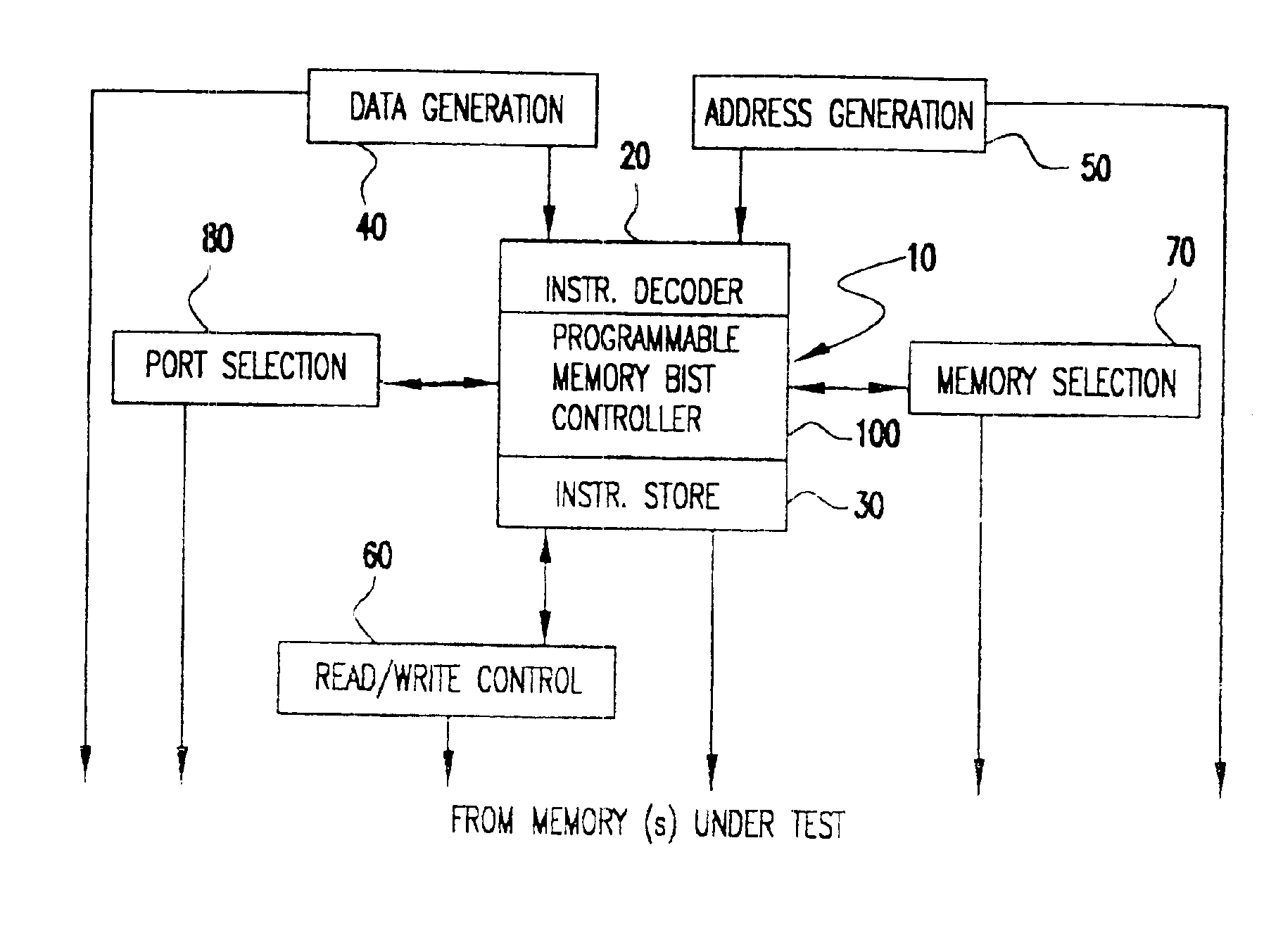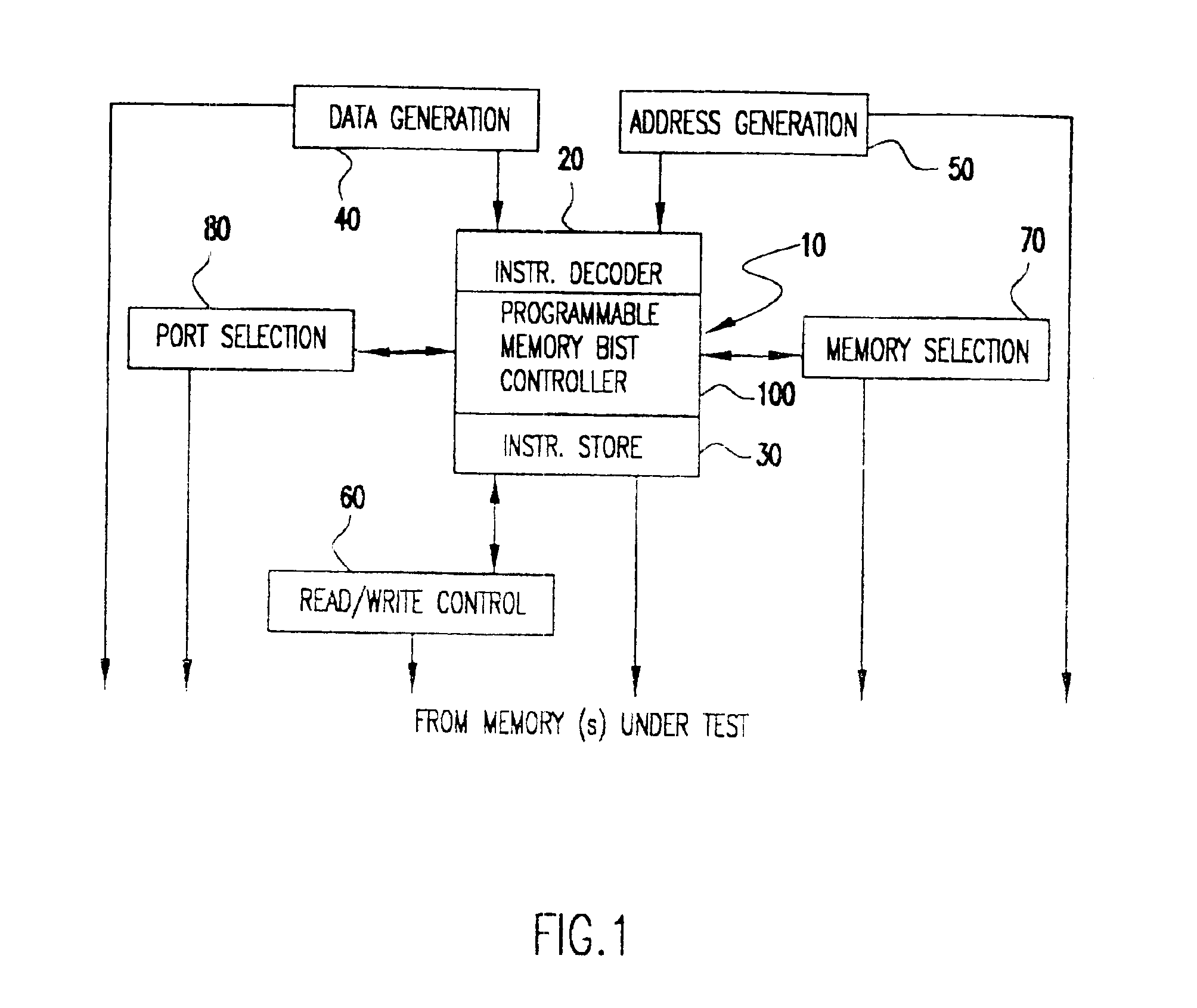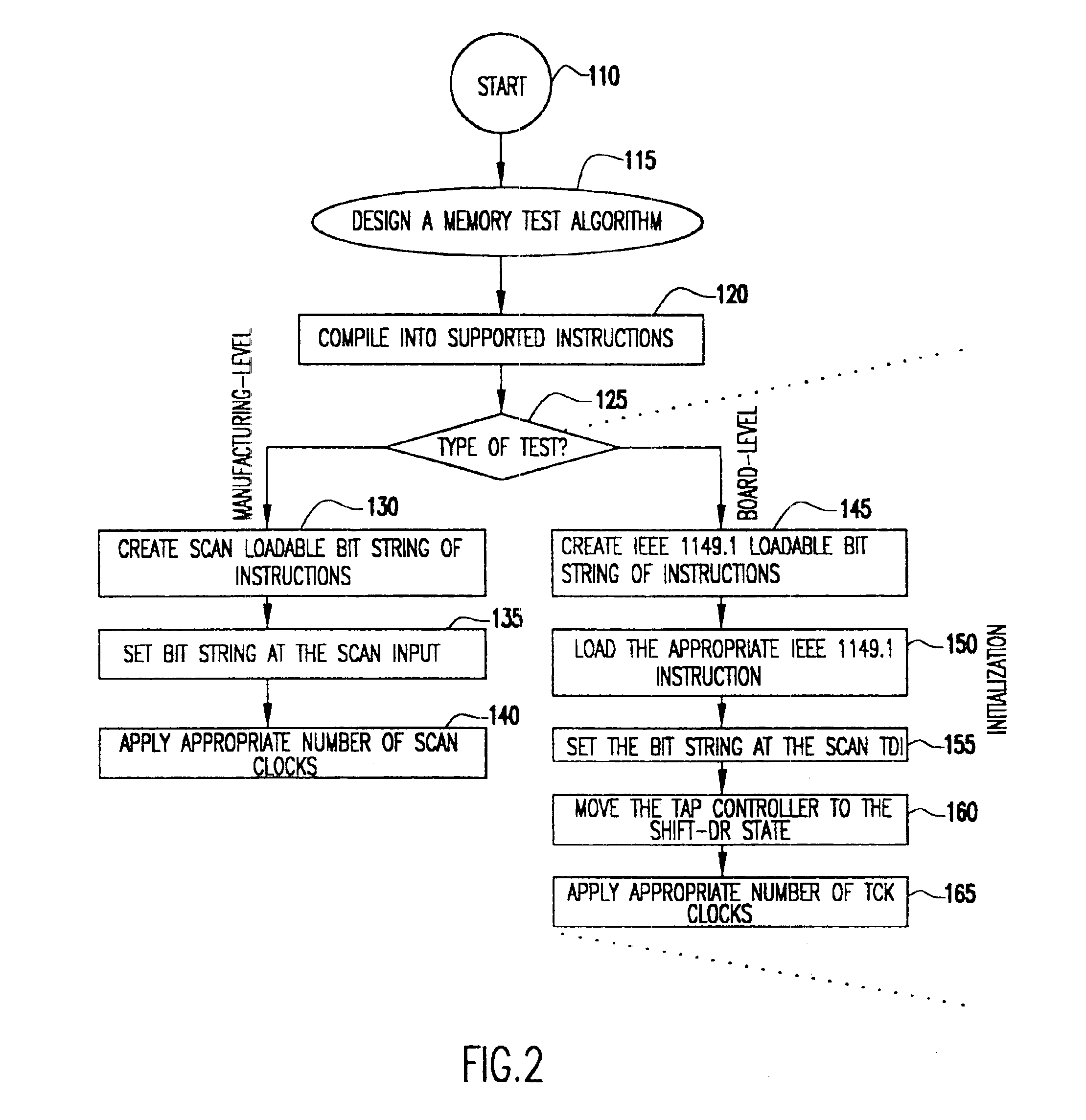System initialization of microcode-based memory built-in self-test
- Summary
- Abstract
- Description
- Claims
- Application Information
AI Technical Summary
Benefits of technology
Problems solved by technology
Method used
Image
Examples
Embodiment Construction
Referring now to the drawings, and more particularly to FIG. 1, there is shown a high-level block diagram of an exemplary architecture of a programmable memory BIST module. (It should understood that the depiction of FIGS. 1-3 are arranged to convey an understanding of the invention and are not admitted to be prior art as to the present invention.) Central to this architecture is a programmable memory BIST controller 10 which preferably includes a microcode based controller 100, an instruction sore module 30 (both shown in FIG. 3 and an instruction decode module 20).
The instruction decode module generates or controls generation of digital signals including data (40), address (50) and control (60) signal generators with which the memory under test is to be exercised. It is also generally desirable to provide for selection of a portion of memory to be tested (70) and selection of a port (80) through which test instructions may be loaded and responses to test signals are retrieved from...
PUM
 Login to View More
Login to View More Abstract
Description
Claims
Application Information
 Login to View More
Login to View More - R&D
- Intellectual Property
- Life Sciences
- Materials
- Tech Scout
- Unparalleled Data Quality
- Higher Quality Content
- 60% Fewer Hallucinations
Browse by: Latest US Patents, China's latest patents, Technical Efficacy Thesaurus, Application Domain, Technology Topic, Popular Technical Reports.
© 2025 PatSnap. All rights reserved.Legal|Privacy policy|Modern Slavery Act Transparency Statement|Sitemap|About US| Contact US: help@patsnap.com



